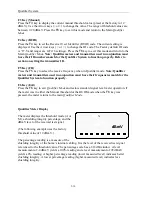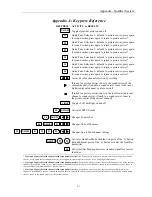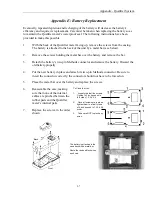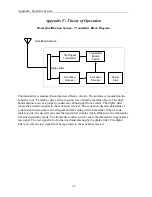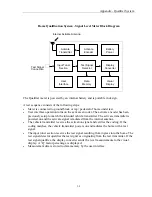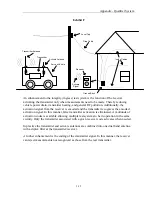
Appendix - Qualifier System
3-11
Exhibit B
The underground distribution system has the cable buried in the ground. The cable surfaces
into above ground enclosures called pedestals. Opening a pedestal allows access to the cable
system for maintenance. Distribution pedestals contain local taps and an underground type
of cable is used to supply cable services to the home. The underground drop cable usually
surfaces just below the ground block.
Cable signals coming to the home follow the downstream path. Downstream signals are in
the 50 MHz to 1 GHz frequency range. To enable two way communications on a cable
system, the upstream path is used for signals originating within the home and traveling to a
central location (headend) in the cable system. Upstream signals utilize the frequency range
of 5 to 50 MHz. The upstream path is used for devices such as cable modems and special
services devices. Examples of special service devices are burglar alarms, fire alarms, and
personal health monitors.
Unfortunately, the reliability of the upstream path is vulnerable to the effects from devices
that radiate electrical energy in the 5 to 50 MHz frequency range. The upstream path uses
digital signals and as such is subject to very unreliable operation if interference signals find
their way into the system. Examples of devices capable of causing interference are: CB
radios, hair dryers, washing machines, food mixers, toasters, vacuum cleaners, and almost
any home appliance that has a motor or a power switch. Interference may occur for an
instant or be continuous while the device is on.
Quality CATV cabling practices utilized within the home usually reduce or eliminate the
susceptibility of interfering signal ingress.
Ingress problems in the upstream path are compounded by the multitude of homes connected
to the CATV distribution system. Any one home is capable of adding an interference signal
on the upstream path and inhibiting communications. A multitude of homes, each only
adding only a small amount of interference, can also render the upstream path useless.
Interference signals add on a power basis.
Typical CATV underground routing to private home.
Underground
Drop Cable
Ground Block
Private Home
CATV Pedestal
Upstream Path
Downstream Path
CATV Pedestal
with Local Tap
Summary of Contents for CyberTek QUALIFIER
Page 2: ......
Page 8: ...Qualifier System iv This page intentionally left blank...
Page 47: ......
Page 48: ......




